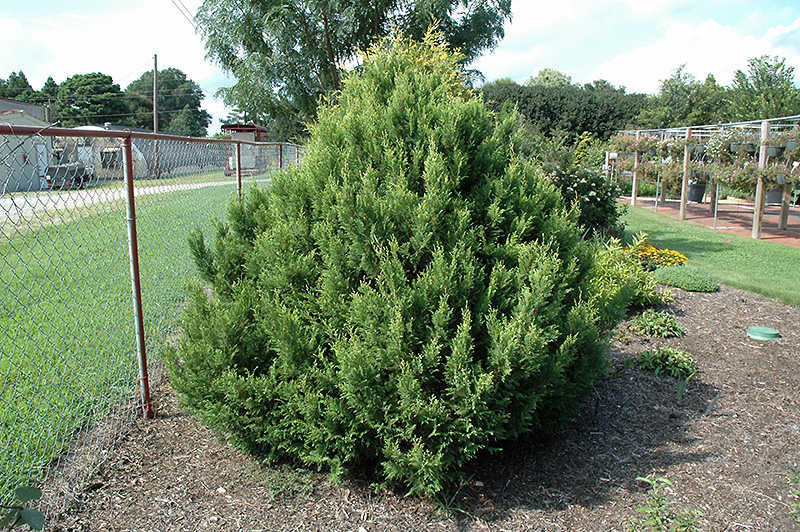Cream Ball False Cypress
Chamaecyparis pisifera 'Cream Ball'
Height: 24 inches
Spread: 24 inches
Sunlight:
![]()
![]()
Hardiness Zone: 4a
Other Names: Japanese Falsecypress, Sawara Falsecypress
Description:
A variety of threadleaf falsecypress with fine, almost string-like brilliant gray-green foliage with cream variegation at the tips, giving an extremely fine texture; ideal for color and texture contrast in the garden; grows very slowly
Ornamental Features
Cream Ball False Cypress is a dwarf conifer which is primarily valued in the garden for its ornamental globe-shaped form. It has attractive creamy white-tipped grayish green foliage. The threadlike sprays of foliage are highly ornamental and turn lime green in the fall, which persists throughout the winter.
Landscape Attributes
Cream Ball False Cypress is a multi-stemmed evergreen shrub with a more or less rounded form. It lends an extremely fine and delicate texture to the landscape composition which should be used to full effect.
This is a relatively low maintenance shrub. When pruning is necessary, it is recommended to only trim back the new growth of the current season, other than to remove any dieback. It has no significant negative characteristics.
Cream Ball False Cypress is recommended for the following landscape applications;
- Accent
- General Garden Use
Planting & Growing
Cream Ball False Cypress will grow to be about 24 inches tall at maturity, with a spread of 24 inches. It tends to fill out right to the ground and therefore doesn't necessarily require facer plants in front. It grows at a slow rate, and under ideal conditions can be expected to live for 70 years or more.
This shrub does best in full sun to partial shade. It prefers to grow in average to moist conditions, and shouldn't be allowed to dry out. It is not particular as to soil type, but has a definite preference for acidic soils. It is highly tolerant of urban pollution and will even thrive in inner city environments. Consider applying a thick mulch around the root zone in winter to protect it in exposed locations or colder microclimates. This is a selected variety of a species not originally from North America.





